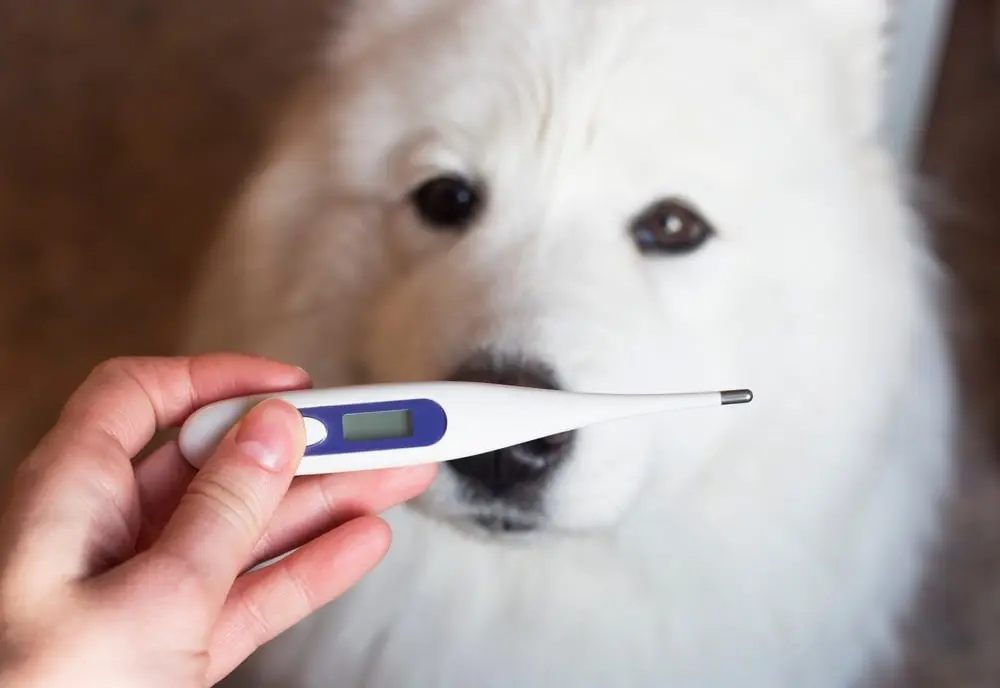PET HEALTH
As a pet owner, you understand the importance of protecting your pup from potential environmental hazards. If you live in a desert climate, especially in the Southwestern United States, you may be familiar with Valley fever. Like humans, animals can contract Valley fever, so it’s important to know what signs and symptoms to watch for in your dog and learn about available treatment options.
What Is Valley Fever in Dogs?
Valley fever — also called coccidioidomycosis, California disease, desert rheumatism, or San Joaquin valley fever — can be contracted by inhaling Coccidioides immitis (or C. immitis) fungus spores.¹ These spores are typically found in soil, mainly in low desert regions of California, Arizona, New Mexico, and Texas. The disease usually manifests in the lungs but can spread to other parts of the body.
How Do Dogs Catch Valley Fever?
Dogs can be at risk of contracting Valley fever by inhaling spores directly from soil as they sniff the ground. They may also ingest dust containing airborne spores displaced by wind or human interference. Upon entering the lungs, spores typically form structures called spherules.
Usually, a healthy adult dog’s immune system can contain spherules to the lungs and ward off further infection. Of all dogs that inhale spores, around 70% don’t get sick, and some even develop an immunity to Valley fever.² On the other hand, the spherules could grow until they burst in infected dogs that are young, old, or have weak immune systems. This releases hundreds of spores throughout the body, spreading the infection and potentially causing serious complications.
Is Valley fever contagious in dogs?
Valley fever isn’t contagious in dogs. Although they can contract the disease, they can’t transmit it to people or other animals. Humans also can’t spread the disease — the only way to catch Valley fever is by inhaling C. immitis spores.
Symptoms of Valley Fever in Dogs
If your dog contracts Valley fever, symptoms can range from unnoticeable to severe. The primary form of the disease is limited to the lungs, but there are some potential tell-tale signs of infection. In early stages, symptoms of primary Valley fever may include:
- Dry cough
- Fever
- Lethargy
- Depression
- Lack of appetite
- Weight loss
The other form — disseminated Valley fever — occurs when fungus spreads from the lungs to other body parts. It can cause more severe cases of the above symptoms and more. As the disease spreads it commonly affects joints and bones, resulting in pain and potentially lameness in your dog. Disseminated Valley fever can also cause infection in the eye, possibly leading to blindness in some cases. Though rare, the fungus could also potentially spread to the brain and induce seizures.
How Is Valley Fever Diagnosed?
If your dog displays the symptoms previously mentioned, diagnostic testing can be used to detect Valley fever. Veterinarians may perform a blood test, known as a Valley fever test or Cocci titer, to measure the presence of Valley fever antibodies in your dog’s immune system. Broader-range blood tests and X-rays on the chest or other infected areas can also be common practice for diagnosing Valley fever in dogs.
Valley Fever in Dogs Treatment
Typically, dogs with Valley fever receive drug therapy treatment for 6 – 12 months after diagnosis, though more serious cases may require longer treatment.3 If the fungus spreads to the nervous system, lifelong treatment could be necessary.
Numerous antifungal medications can treat Valley fever in dogs. Three of the most regularly prescribed medications are fluconazole (brand name Diflucan®), itraconazole (brand name Sporanox®) and ketoconazole (brand name Nizoral®). All three can cause side effects like stomach and intestinal pain, liver reactions, and birth defects, though each can have its own set of potential advantages and drawbacks depending on your circumstances.
Supportive and symptomatic treatments like cough suppressants and pain relievers could also help improve your dog’s quality of life during recovery.
In some cases, hospitalization is necessary for intravenous fluid treatment and oxygen therapy. Surgical intervention may also be required to alleviate eye pain or correct organ failure that resulted from Valley fever. If your dog’s appetite is severely compromised, they may need a feeding tube surgically inserted.
Survival rate of Valley fever in dogs
About 90% of dogs survive after contracting Valley fever. Some dogs respond to treatment within 1 – 2 weeks, while others may have prolonged complications.4 In extreme cases, some dogs may not be receptive to treatment and the infection could be fatal.
How To Prevent Valley Fever in Dogs
There is no guaranteed way to prevent Valley fever in dogs. Fortunately, there are ways to decrease your dog’s risk of inhaling pathogenic spores. Consider keeping your dog inside more often, reducing dust-generating activities like digging and sniffing grass, gravel, or other areas of the ground. Although there is one in development, there is currently no vaccine for Valley fever.
Pet Insurance Can Help With Valley Fever
Dog owners want to keep their pups healthy at all costs, though uncontrollable external factors can make this more difficult. If you live in arid regions of states like California and Arizona, it can be smart to know what to do in case your dog ingests C. immitis spores or contracts Valley fever.
A dog insurance policy may be a great option to help you stay prepared for the unpredictability of owning a dog. Start preparing today and get a free quote from MetLife Pet Insurance, winner of the “Pet Insurance of the Year” Award in the 2024 Pet Independent Innovation Awards Program.


